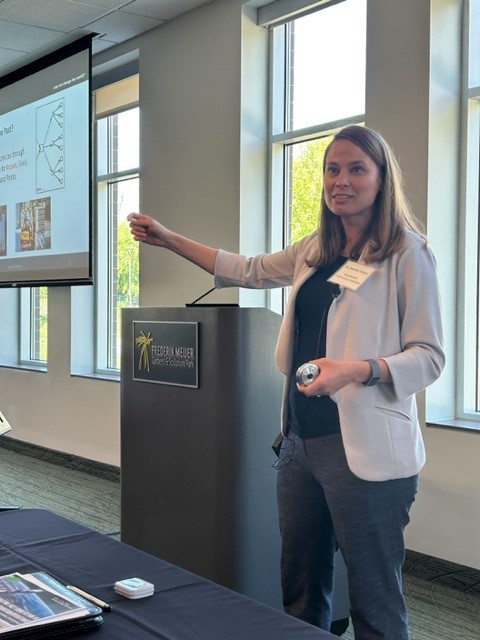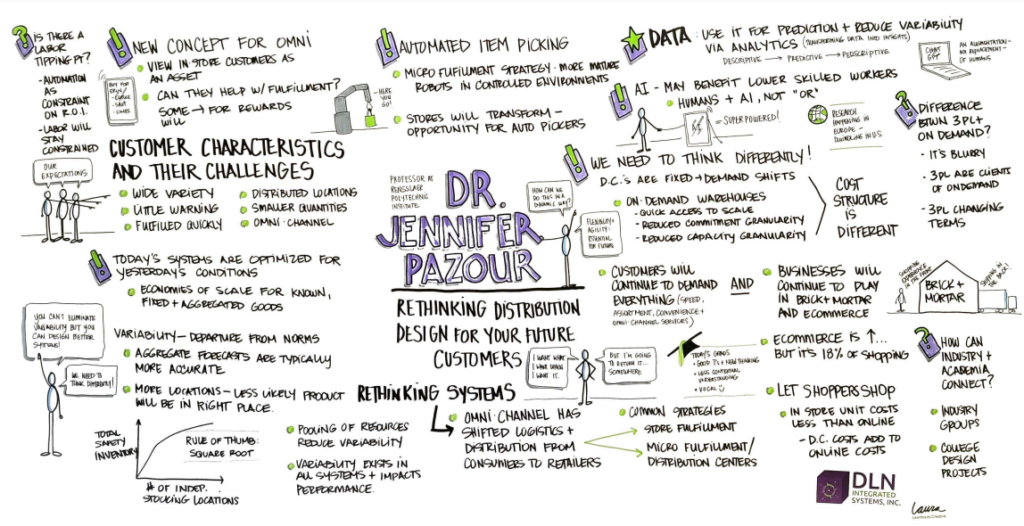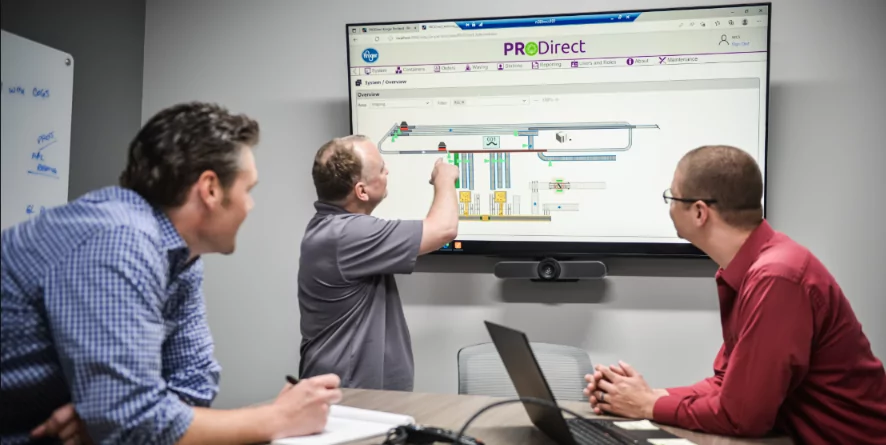Every other year DLN hosts an educational conference, where we hear from a handful of experts from academia & industry on topics that matter most to our clients. Our recent 2023 conference centered on the topic “Separating Fact & Fiction in Distribution Operations.”
This post covers the session delivered by Dr. Jennifer Pazour, Associate Professor of Industrial & Systems Engineering at Rensselaer Polytechnic Institute (RPI) in Troy, New York, and member of MHI’s College Industry Council on Material Handling Education.

Dr. Pazour’s presentation “Rethinking Distribution Design for your Future Customers” took our attendees on a journey through on-going and future distribution challenges. She covered Customer Characteristics & Their Challenges, Rethinking Distribution Solutions, The Power of Data, Analytics & AI/ML.
Customer Characteristics & Their Challenges
Dr. Pazour, who likes to be called Jen, described how many of today’s distribution systems are optimized for yesterday’s customers. Building resource efficiencies through economies of scale for known, fixed and aggregated demand points was the way things worked for years.
Enter our villain: Variability. Anything that causes the system to depart from regular, predictable behavior is variability. This could be due to customer demand being different than what was expected, or due to external supply chain disruptions or internal supply chain partner decisions affecting the supply quantity available. Variability can’t be removed, but we can aim to design systems and processes with reduced variability.

One reason for variability is today’s omnichannel buying habits. We order online, receive at our home, return to a store – or we buy online, pick up at a store, return via mail – or we do some of this at a store, some of this online, whatever we feel like that day. It wasn’t that long ago we all did it the same way – go to a store to pick out purchases. With more locations and ways to get our products, this creates additional demand-side variability.
Another challenge with today’s customers is that they shift the burden of omnichannel fulfillment from consumers (who shopped or “picked” their own orders in store) to companies who must now become much more flexible, accurate and quick in fulfilling consumer demand with logistics solutions. Customers will continue to demand speed, assortment, and convenience while businesses grapple with the best way to design facilities, material handling and operations that can deliver.
Rethinking Distribution Solutions
Jen suggest we need to “think differently about how resources are acquired, managed and allocated” for modern customers. A major opportunity here is to rethink supply resource capacity. She offered a few examples of ways for companies to scale – including on-demand warehousing platforms that match companies with underutilized DC capacity that companies like Ralph Lauren, BJ’s Wholesale and Ace Hardware use.

She also offered a new concept for omni-channel fulfillment, where in-store customers can receive financial benefit from assisting with online order picking.
Another possibility? Automated picking solutions are being researched for possible in-store fulfillment, in a warehouse or existing space within the actual store.
The Power of Data, Analytics & Artificial Intelligence / Machine Learning (AI/ML)
Our villain, Variability, was brought up a moment ago. While we can’t get rid of variability completely, Jen suggests using Data, Analytics and AI/ML to help us make better distribution decisions to combat its effects. Early adopters are embracing GPS-enabled big data telematics, intelligent transport systems, and internet of things to help them understand the intricacies of their supply and demand and thus better predict supply and demand in their supply chains.
Walmart is using an AI chatbot to augment some supplier deals. “The technology is to augment humans, not replace them, and the value is taking off their plates the tedious work that wastes their time,” says Jen.
Takeaways

- Today’s customers cause challenges to distribution, specifically their characteristics increase demand-side variability
- We need to think differently about how we acquire, manage and allocate resources to meet customer demand
- There is power in data, but only if we think about what decisions will be made (analytics)
- AI/ML can help to augment human decision making (bet on the solutions where its AI/ML + Humans versus either alone)
- If your organization needs help doing this, industrial and systems engineers can help!




